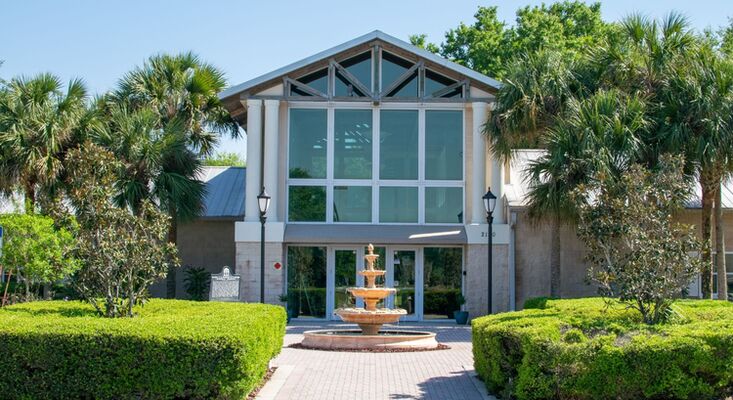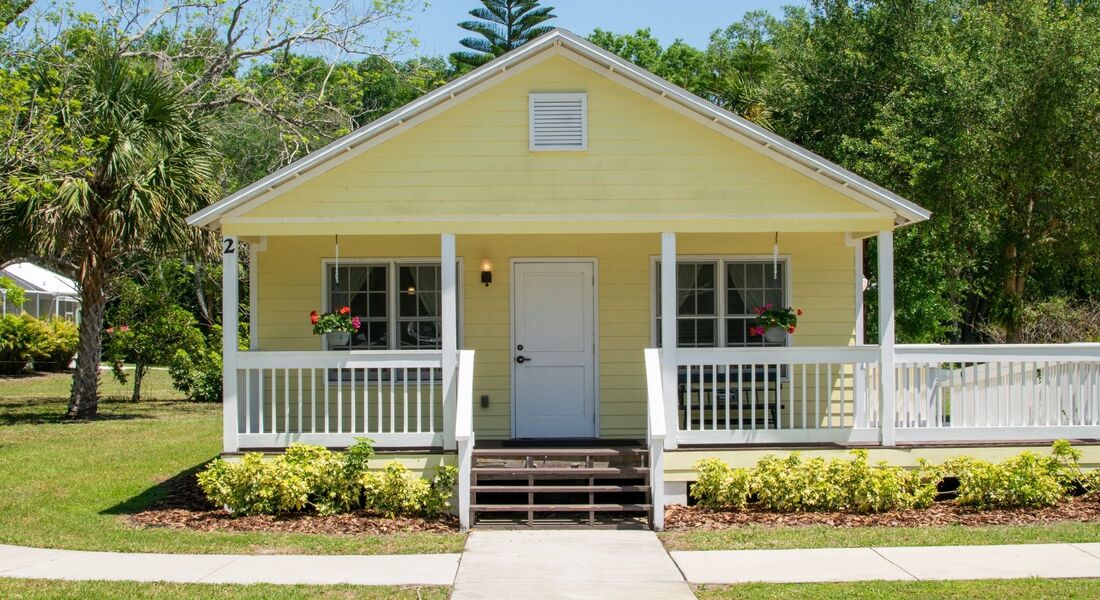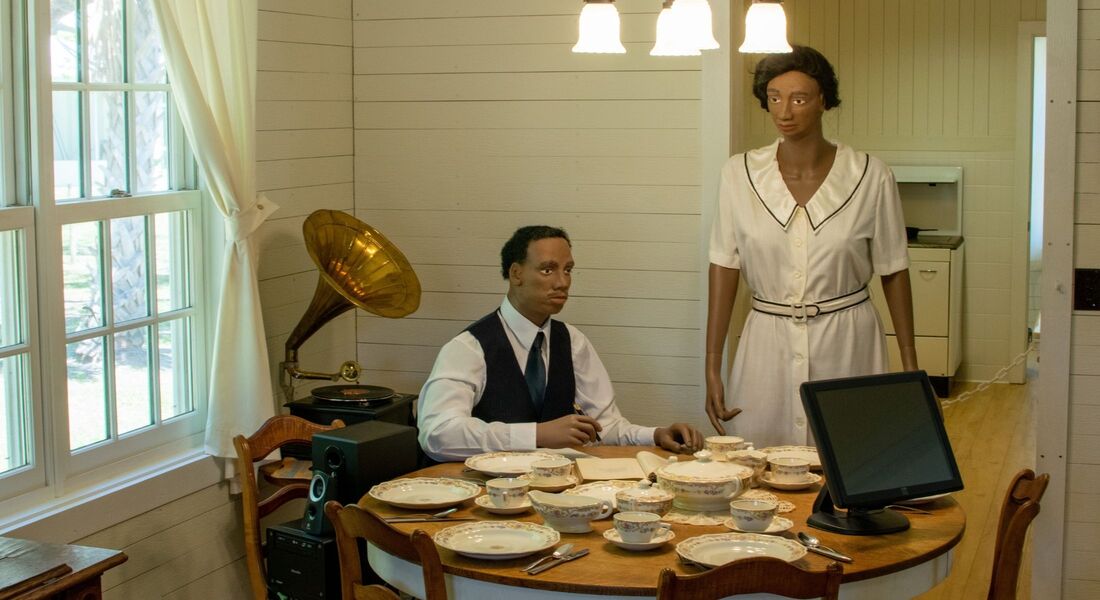
The tiny little town of Mims, population 7000, played a big role in the Civil Rights Movement. Yet it isn’t something we learned in our history class in school. Instead, I learned about it through a recent visit to the Harry T. & Harriette V. Moore Cultural Center and Museum. It’s an immensely powerful story and the Cultural Center Staff tells it well.
The Civil Rights Movement is commonly defined in our history textbooks to have started in 1954 and ended in 1968 with Martin Luther King, Jr., and Malcolm X at the forefront. While we know it did not truly end in 1968, what most do not know is that the civil rights movement was pioneered long before 1954 by a husband and wife named, Harry T. & Harriette V. Moore.
Harry Tyson Moore was born November 18, 1905 in the small farming community of Houston, Florida. Harry was sent to live with his aunts in Jacksonville Florida, and they were educators. Harry’s mind quickly took to learning and he understood the importance of intellectual achievement. Mr. Moore graduated from Florida Memorial College in 1925 with a teaching degree and soon began teaching fourth grade in Cocoa, Florida. It was here in Brevard County that he met his soon-to-be-wife, Harriette Vyda Simms who was also a teacher prior to selling insurance. Harry Moore and Harriette Simms met at a card game in Cocoa Florida playing “Bid Whist”, and fell in love and married on Christmas Day, 1926.
With both Mr. and Mrs. Moore understanding the power of education, they furthered their studies both graduating from Bethune Cookman College in Daytona Beach. Harriette’s parents lived in Mims, Florida, and the newlyweds planted roots, building a house on a one acre parcel of land that Harriette’s mother gave to them. Success came soon thereafter when Mr. Moore was promoted to principal of the Titusville Colored School.

While experiencing the challenges of inequality for black teachers within the school system, Mr. & Mrs. Moore was forced to resign their positions as Teachers/Principal. In response, he shifted his focus towards fighting the injustices that surrounded him and other people of color in the south.
In 1934, the Moore’s founded the Brevard County chapter of the NAACP and helped organize Florida’s statewide NAACP organization. Under Harry Moore, the NAACP membership base grew exponentially while working towards equal education and housing, investigating lynchings, filing lawsuits against voting barriers, and working for equal pay. 10 years after he founded the chapter, Moore organized the Florida Progressive Voters League. The League registered more than 100,000 black citizens to vote, resulting in Florida having the highest proportion of African American voters in the South.
Through his work, he became loved and respected by many and unfortunately, hated by many more. Being a free, educated, orange grove farm owning black man now with political pull through the NAACP, Mr. Moore threatened the southern status quo and stoked the fire of hate in many of the south’s white citizens.
With post-war racial tensions rising in Florida and veterans returning from overseas to a still very segregated south, 1949 quickly became a year to remember in Florida’s violent history. In July, four young black men were accused of raping a white woman in Groveland. Of the four, one fled and was killed by a posse while the remaining three were arrested and beaten until a forced confession was delivered. In custody, a mob descended demanding Sheriff McCall hand over the men for lynching. When the Sheriff refused, the mob left and proceeded to burn down the buildings in the black district of town. The town burned for six days before the mob was quelled. With all three convicted, one who was a minor received a life sentence, while the remaining two were sentenced to death by the electric chair.
Knowing the innocence of the young men convicted, Harry Moore, now President of the Florida NAACP, compiled a campaign and with NAACP support, appeals were filed. In April 1951, a legal team headed by Thurgood Marshall won the appeal of Shepherd and Irvin’s guilty verdicts due to the bias of the all-white jury that convicted them.
Sheriff McCall was held responsible for the transportation of Shepherd and Irvin to the new trial in 1951. In route, McCall claimed that both men, while handcuffed and shackled, attacked him and attempted to flee. After shooting both men and thinking both were dead McCall reported the incident. Shepherd died at the scene however when medics arrived, they noticed Irvin was still breathing. In accordance with laws against black men being transported in ambulances, the county undertaker was called to take Shepherd's body, and the still-breathing Irvin to the hospital. Irvin testified to the NAACP and the FBI that McCall shot both in cold blood. Upon a second investigation, a bullet was found in the road indicating that McCall drug the men out of the car and proceeded to shoot them at a downward angle while they laid handcuffed and shackled in the road. Upon news of this, Mr. Moore called for an indictment against Sheriff McCall and demanded Florida Governor Warren suspend McCall from office.
Tragically, Harry and Harriette Moore’s story ends there. Six weeks later, on Christmas night 1951 on their twenty-fifth wedding anniversary, a bomb was planted and detonated underneath the Moore’s bedroom at their house in Mims. After being pulled from the rubble, both Harry and Harriette were driven to the hospital by Harry’s brother in-law. Mr. Moore succumbed to his injuries on the drive there. Harriette, one day after attending Harry’s funeral also succumbed to her injuries making Harry and Harriette the first martyrs of the civil rights movement, and the first couple to be killed.
The murder of Harry and Harriette Moore caused a national outcry with politicians and celebrities joining the ranks of protestors across the nation. The NAACP held the Great Night Gala at Madison Square Garden in honor of Mr. and Mrs. Moore. The event raised $50,000 dollars which was then used to pass laws allowing the use of transportation and the case of Brown v. Board of Education in which the Supreme Court unanimously ruled racial segregation of children in public schools was unconstitutional.
The FBI was charged with the investigation of the murders, and while the FBI was convinced the Ku Klux Klan had committed the bombing and identified Klansmen, substantial evidence was never found and the case was closed two years later in 1953. Since 1953, the case has been reopened three times, each time resulting in no new evidence.
While no new evidence was found, enough was known for the state of Florida to conclude the Moore’s were victims of a conspiracy by the Central Florida Klavern of the Ku Klux Klan.
As we approach the 70th anniversary, we cannot bring Harry and Harriette Moore back nor can we prosecute the perpetrators. What we can do, is share the story of the pioneers of the civil rights movement and further seek to build the pillars of justice and equality of which Harry T. and Harriette V. Moore laid the first stone.
Harry T. & Harriette V. Moore Cultural Center & Museum
In honor of Harry and Harriette Moore, Brevard County opened the Harry T. & Harriette V. Moore Memorial Park and Museum in 2004. The Museum, replica house, and memorial park span twelve acres on the site of the original Moore family home.
The Cultural Center & Museum is open to the public, and they also provide private scheduled tours. The tour consists of the time-lined museum which not only teaches about the Moore’s lives but the overarching struggle towards equality so many in this nation have suffered.

The replica house sits ten feet away from where the original house sat seven decades ago. The interior of the replica house is the same set up as Harry and Harriette had their home all the way down to the placement of their daughters’ beds which saved Annie Rosalea from being killed in the bombing. One special piece is the Bible on the kitchen table. When Harry and Harriette’s daughter visited the home, she opened the Bible to one of her parents’ favorite verses, the book of Isaiah and the Bible remains open to that page to this day.
 The Memorial Park and Reflection Pond expands the remainder of the lush property as a quiet place to reflect on the Moore's life and story.
The Memorial Park and Reflection Pond expands the remainder of the lush property as a quiet place to reflect on the Moore's life and story.
To quote Sonya Mallard, Cultural Center Coordinator, while gazing over the Memorial Park, “If these trees could talk.”
To book a tour, call 321-264-6595.
Hours: Mon-Friday 9am - 5pm (closed from 1-2pm for lunch)
Saturday 10am-2pm
Grow Your Business with us. List Yourself Here
